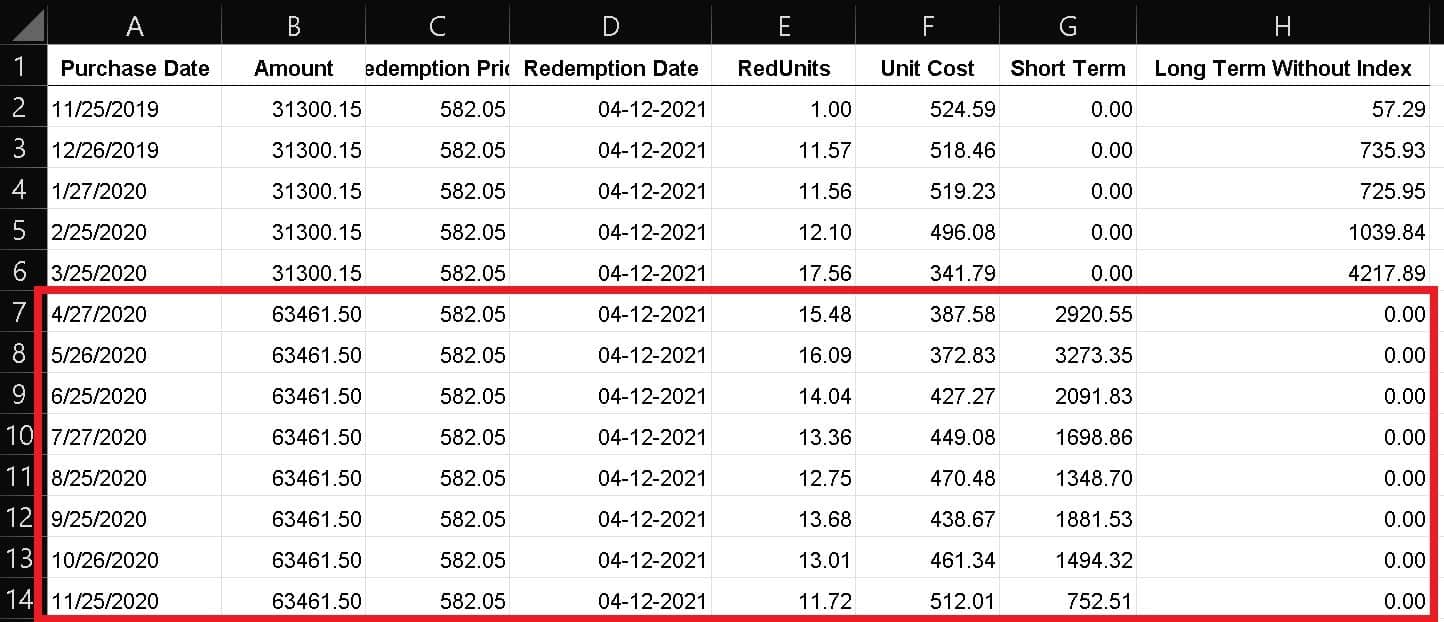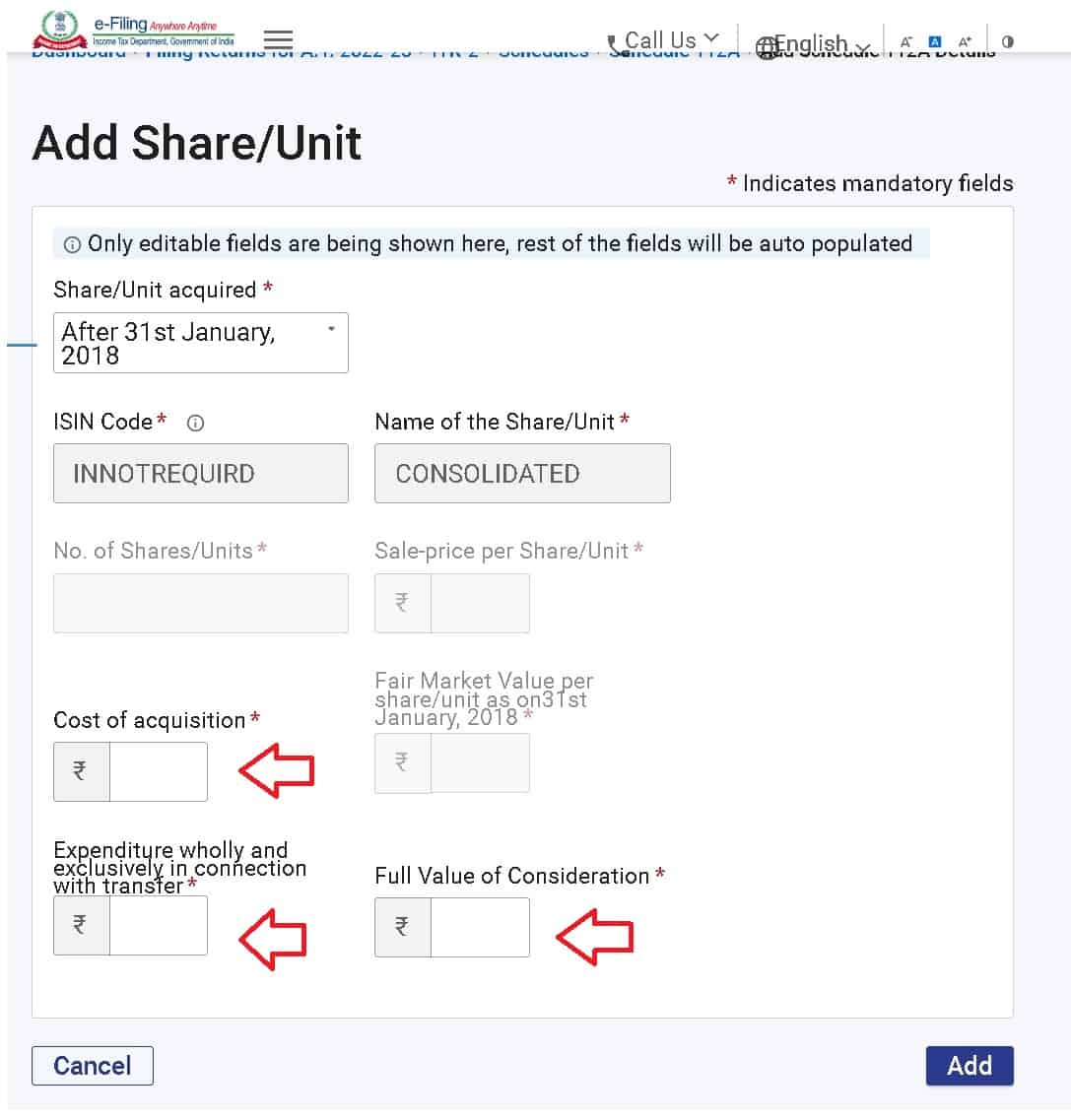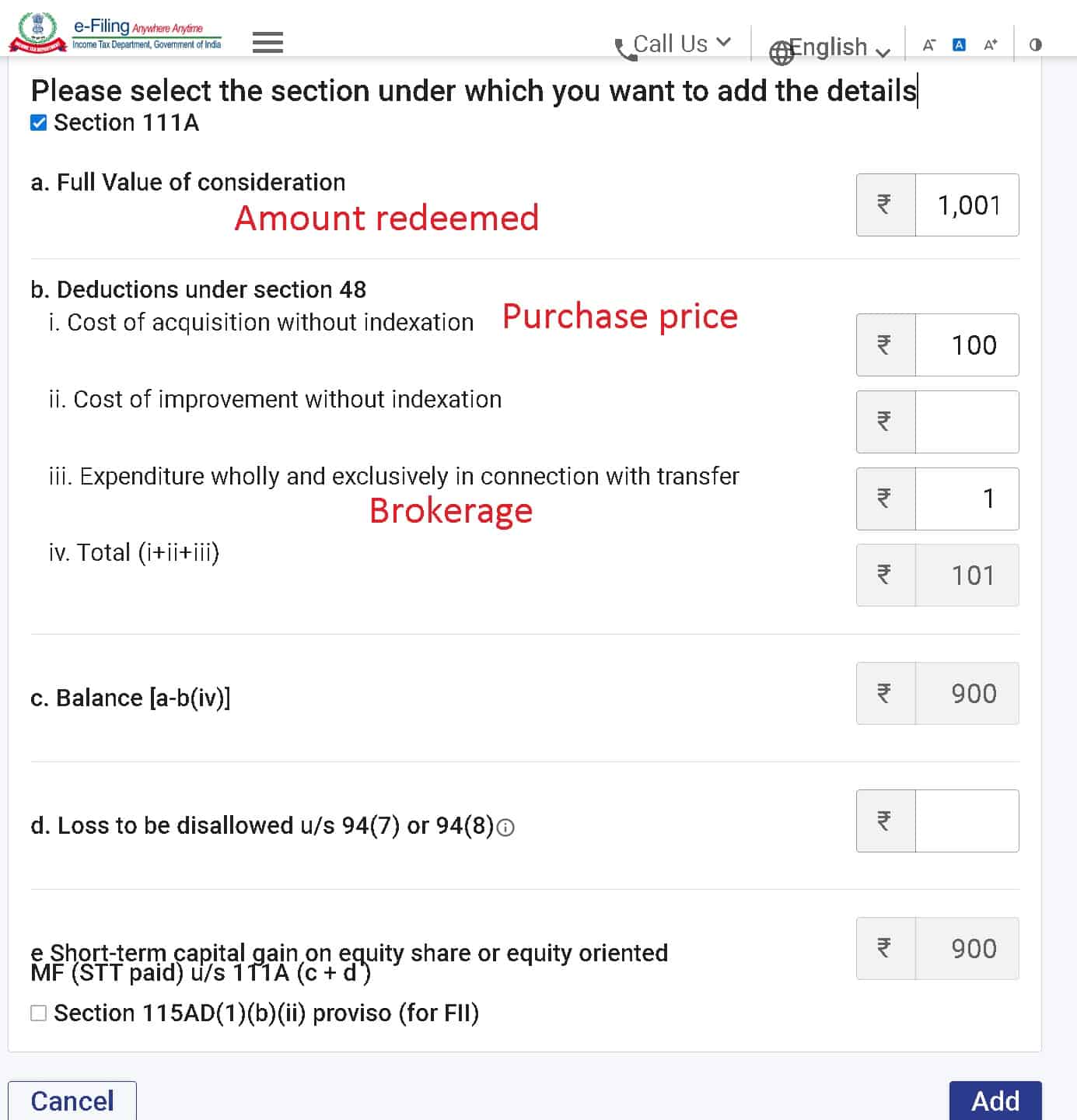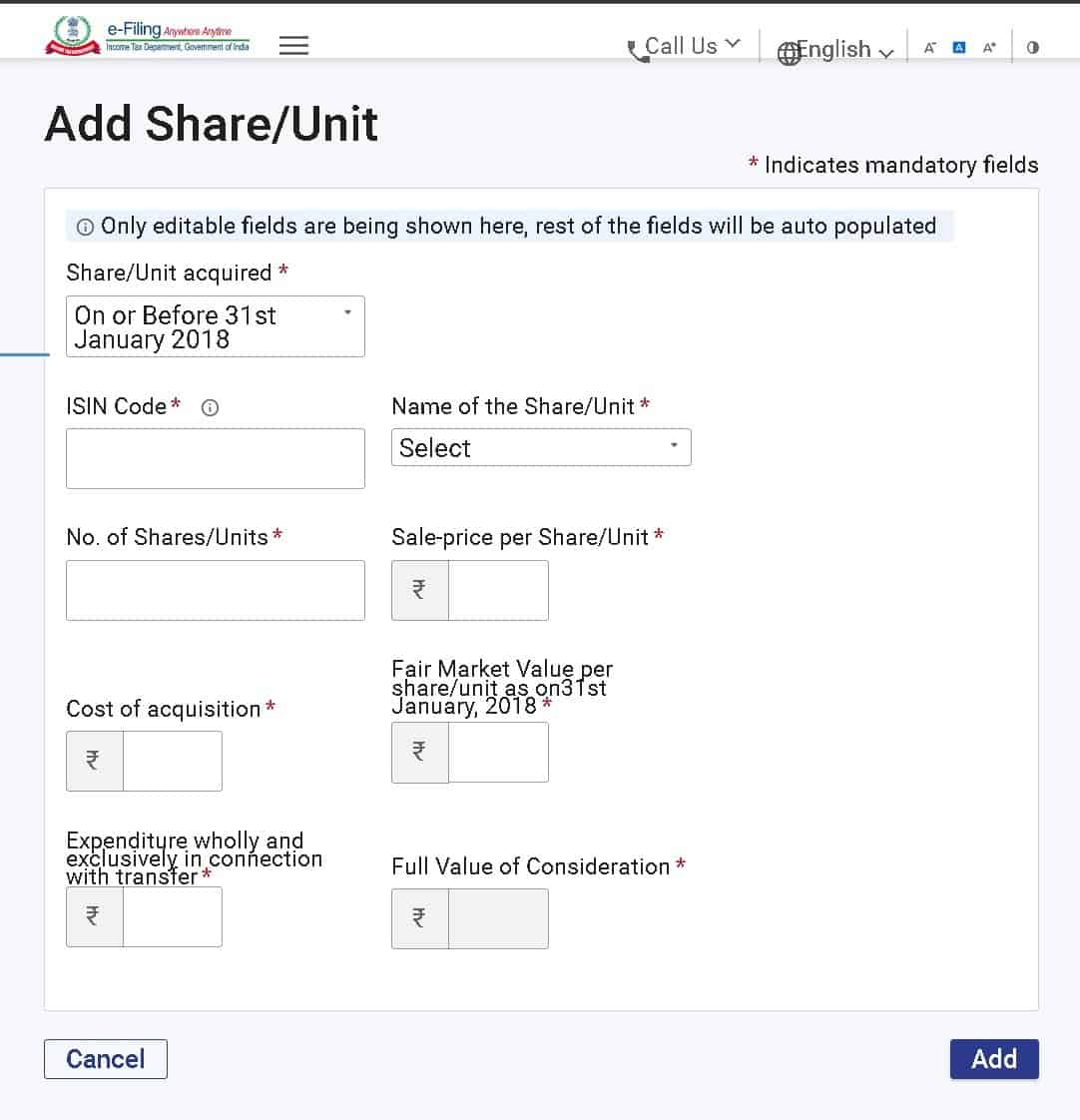As a follow-up to our detailed guide on How to enter mutual fund and share capital gains in ITR2 (or ITR3), we now present two examples of how to use mutual fund capital gains statement for LTCG and STCG entries in ITR.
Salaried taxpayers should use ITR2 if they have capital gains to report. Businessmen and professionals should use ITRT3 for the same. We recommend that those who are filing capital gains for the first time start with the above-linked article and then head back here.
Some notes of caution:
- Capital gains statements from AMCs or CAMS or Kfintech will have different formats.
- Some statements will have a summary and some statements will simply show all the transactions. Always use the full list of transactions for determining STCG and LTCG.
- These statements may have errors! So cross-check with your MF account statement.
- In the two examples below, the screenshots are abridged and annotated versions of the CG statement. Your actual statement will differ.
Example 1: LTCG + STCG from the same redemption
When we redeem from a mutual fund, units that were invested the earliest will be removed first and then the next set of oldest units and then the next set and so on. This is known as FIFO – first in, first out.
Let us consider a case where Rs. 94761.65 was redeemed from a fund on 12th April 2021. The capital gains statement for this is shown below. We have removed several columns which are not relevant before taking the screenshot.
Join 32,000+ readers and get free money management solutions delivered to your inbox! Subscribe to get posts via email! (Link takes you to our email sign-up form)
🔥Want to create a complete financial plan? Learn goal-based investing? Exclusive access to our DIY tools? Increase your income with your skills? Use this link to enjoy massive discounts on our robo-advisory tool & courses! 🔥
The purchase dates corresponding to FIFO units are shown.

Notice the last two columns – G and H. Some entries correspond to STCG (within the red box) and some to LTCG.
Now among the LTCG entries, check if any of the purchase dates fall on or before 1st Jan 2018. If they do, then grandfathering rules will apply to LTCG. We will discuss this in the second example. In the present case, all purchase dates are after Jan 31st 2018. So no grandfathering rules apply. For an explanation see: Equity LTCG Tax With Grandfathering Explained: Video + Calculator.
If no grandfather is involved then LTCG reporting becomes simple.
LTCG Entries (without grandfathering) to be made in ITR2 or ITR3
- Cost of acquisition: This is the purchase price. To determine this, multiply columns E and F and add them (LTCG entires only rows 2 to 6 in this example). That is, we are multiplying the redeemed units and the unit cost (purchase NAV) and adding them up to find the total purchase prices for LTCG units. This entry may be readily available in the CG sheet but it is better to double-check.

- Full value of consideration: This is the redemption amount corresponding to LTCG. This is Rs. 31300.15 (Cells B2 to B6 all show the same amount in the screenshot).
- Expenditure wholly and exclusively in connection with transfer: Any commissions or brokerage involved. Set to zero if you don’t know. It will not make a big difference to the result.
This is a screenshot from How to enter mutual fund and share capital gains in ITR2 (or ITR3).

STCG Entries to be made in ITR2 or ITR3
STCG entries are identical to LTCG entries without grandfathering.
- Cost of acquisition: This is the purchase price. To determine this, multiply columns E and F and add them (LTCG entires only rows 7 to 14 in this example). That is, we are multiplying the redeemed units and the unit cost (purchase NAV) and adding them up to find the total purchase prices for STCG units. This entry may be readily available in the CG sheet but it is better to double-check.
- Full value of consideration: This is the redemption amount corresponding to STCG. This is Rs. 63461.50 (Cells B7 to B14 all show the same amount in the screenshot).
- Expenditure wholly and exclusively in connection with transfer: Any commissions or brokerage involved. Set to zero if you don’t know. It will not make a big difference to the result.
This is a screenshot from How to enter mutual fund and share capital gains in ITR2 (or ITR3).

Example 2: LTCG with and without grandfathering from the same redemption
Let us now consider a case where a single redemption corresponds to both units purchased on/before Jan 31st 2018 (LTCG with grandfathering) and units purchased after Jan 31st 2018 (LTCG without grandfathering).

Rs. 189408.54 is redeemed from a fund on 4th Sep 2021. Part of the units redeemed was purchased on 1st Jan 2015 and therefore grandfathering rules will apply when computing LTCG for these units.
The remaining units were purchased on Aug 2 2019. No grandfathering rules apply for these units.
The way in which these are reported in ITR2 or ITR3 is quite different.
Reporting LTCG with grandfathering
- The ISIN code of the fund (or stock) must be entered. This is available in most CG statements or can be found online. The fund name will then be auto-populated.
- The number of units must be entered: This is usually not found in CG summarised and one must carefully look at all transactions corresponding to a fund and add them up. In the present case, it is just 1608.63 (Cell E2)
- The Sale-price per Share/Unit must be entered. This is Rs. 74.84 per unit (Cell C2)
- The Cost of acquisition: This is cell E2 (redeemed units) X Cell F2 (purchase NAV). For multiple entries, one must sum this product appropriately.
- Fair Market Value per share/unit as of on31st January 2018: This is given in cell H2.
- Expenditure wholly and exclusively in connection with transfer: Brokerage if any. Set to zero if not sure.
- The Full Value of Consideration or the redemption amount will be auto-populated by multiplying the no of units and sale price.
This is a screenshot from ITR2 or ITR3

We have already discussed LTCG without grandfathering above and the arguments for this example are similar.
In summary, we urge taxpayers carefully study all the transactions listed in the capital gains statement and double-check the sale price and cost price with their account statements before entering it into the ITR portal. Filing capital gain reports are cumbersome but with some practice, one will get used to it.

Use our Robo-advisory Tool to create a complete financial plan! ⇐More than 3,000 investors and advisors use this! Use the discount code: robo25 for a 20% discount. Plan your retirement (early, normal, before, and after), as well as non-recurring financial goals (such as child education) and recurring financial goals (like holidays and appliance purchases). The tool would help anyone aged 18 to 80 plan for their retirement, as well as six other non-recurring financial goals and four recurring financial goals, with a detailed cash flow summary.
🔥You can also avail massive discounts on our courses and the freefincal investor circle! 🔥& join our community of 8000+ users!
Track your mutual funds and stock investments with this Google Sheet!
We also publish monthly equity mutual funds, debt and hybrid mutual funds, index funds, and ETF screeners, as well as momentum and low-volatility stock screeners.
You can follow our articles on Google News

We have over 1,000 videos on YouTube!

Join our WhatsApp Channel



- Do you have a comment about the above article? Reach out to us on Twitter: @freefincal or @pattufreefincal
- Have a question? Subscribe to our newsletter using the form below.
- Hit 'reply' to any email from us! We do not offer personalised investment advice. We can write a detailed article without mentioning your name if you have a generic question.
Join 32,000+ readers and get free money management solutions delivered to your inbox! Subscribe to get posts via email! (Link takes you to our email sign-up form)
About The Author
 Dr M. Pattabiraman (PhD) is the founder, managing editor and primary author of freefincal. He is an associate professor at the Indian Institute of Technology, Madras. He has over 13 years of experience publishing news analysis, research and financial product development. Connect with him via Twitter(X), LinkedIn, or YouTube. Pattabiraman has co-authored three print books: (1) You can be rich too with goal-based investing (CNBC TV18) for DIY investors. (2) Gamechanger for young earners. (3) Chinchu Gets a Superpower! for kids. He has also written seven other free e-books on various money management topics. He is a patron and co-founder of “Fee-only India,” an organisation promoting unbiased, commission-free, AUM-independent investment advice.
Dr M. Pattabiraman (PhD) is the founder, managing editor and primary author of freefincal. He is an associate professor at the Indian Institute of Technology, Madras. He has over 13 years of experience publishing news analysis, research and financial product development. Connect with him via Twitter(X), LinkedIn, or YouTube. Pattabiraman has co-authored three print books: (1) You can be rich too with goal-based investing (CNBC TV18) for DIY investors. (2) Gamechanger for young earners. (3) Chinchu Gets a Superpower! for kids. He has also written seven other free e-books on various money management topics. He is a patron and co-founder of “Fee-only India,” an organisation promoting unbiased, commission-free, AUM-independent investment advice.Our flagship course! Learn to manage your portfolio like a pro to achieve your goals regardless of market conditions! ⇐ More than 3,500 investors and advisors are part of our exclusive community! Get clarity on how to plan for your goals and achieve the necessary corpus no matter the market condition!! Watch the first lecture for free! One-time payment! No recurring fees! Life-long access to videos! Reduce fear, uncertainty and doubt while investing! Learn how to plan for your goals before and after retirement with confidence.
Increase your income by getting people to pay for your skills! ⇐ More than 800 salaried employees, entrepreneurs and financial advisors are part of our exclusive community! Learn how to get people to pay for your skills! Whether you are a professional or small business owner seeking more clients through online visibility, or a salaried individual looking for a side income or passive income, we will show you how to achieve this by showcasing your skills and building a community that trusts and pays you. (watch 1st lecture for free). One-time payment! No recurring fees! Life-long access to videos!
Our book for kids: “Chinchu Gets a Superpower!” is now available!


Must-read book even for adults! This is something that every parent should teach their kids right from their young age. The importance of money management and decision making based on their wants and needs. Very nicely written in simple terms. - Arun.Buy the book: Chinchu gets a superpower for your child!
How to profit from content writing: Our new ebook is for those interested in getting a side income via content writing. It is available at a 50% discount for Rs. 500 only!
Do you want to check if the market is overvalued or undervalued? Use our market valuation tool (it will work with any index!), or get the Tactical Buy/Sell timing tool!
We publish monthly mutual fund screeners and momentum, low-volatility stock screeners.
About freefincal & its content policy. Freefincal is a News Media organisation dedicated to providing original analysis, reports, reviews and insights on mutual funds, stocks, investing, retirement and personal finance developments. We do so without conflict of interest and bias. Follow us on Google News. Freefincal serves more than three million readers a year (5 million page views) with articles based only on factual information and detailed analysis by its authors. All statements made will be verified with credible and knowledgeable sources before publication. Freefincal does not publish paid articles, promotions, PR, satire or opinions without data. All opinions will be inferences backed by verifiable, reproducible evidence/data. Contact Information: To get in touch, please use our contact form. (Sponsored posts or paid collaborations will not be entertained.)
Connect with us on social media
- Twitter @freefincal
- Subscribe to our YouTube Videos
- Posts feed via Feedburner.
Our publications
You Can Be Rich Too with Goal-Based Investing
 Published by CNBC TV18, this book is designed to help you ask the right questions and find the correct answers. Additionally, it comes with nine online calculators, allowing you to create custom solutions tailored to your lifestyle. Get it now.
Published by CNBC TV18, this book is designed to help you ask the right questions and find the correct answers. Additionally, it comes with nine online calculators, allowing you to create custom solutions tailored to your lifestyle. Get it now.Gamechanger: Forget Startups, Join Corporate & Still Live the Rich Life You Want
 This book is designed for young earners to get their basics right from the start! It will also help you travel to exotic places at a low cost! Get it or gift it to a young earner.
This book is designed for young earners to get their basics right from the start! It will also help you travel to exotic places at a low cost! Get it or gift it to a young earner.Your Ultimate Guide to Travel
 This is an in-depth exploration of vacation planning, including finding affordable flights, budget accommodations, and practical travel tips. It also examines the benefits of travelling slowly, both financially and psychologically, with links to relevant web pages and guidance at every step. Get the PDF for Rs 300 (instant download)
This is an in-depth exploration of vacation planning, including finding affordable flights, budget accommodations, and practical travel tips. It also examines the benefits of travelling slowly, both financially and psychologically, with links to relevant web pages and guidance at every step. Get the PDF for Rs 300 (instant download)